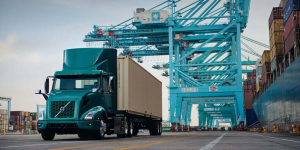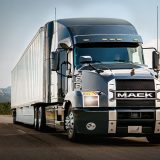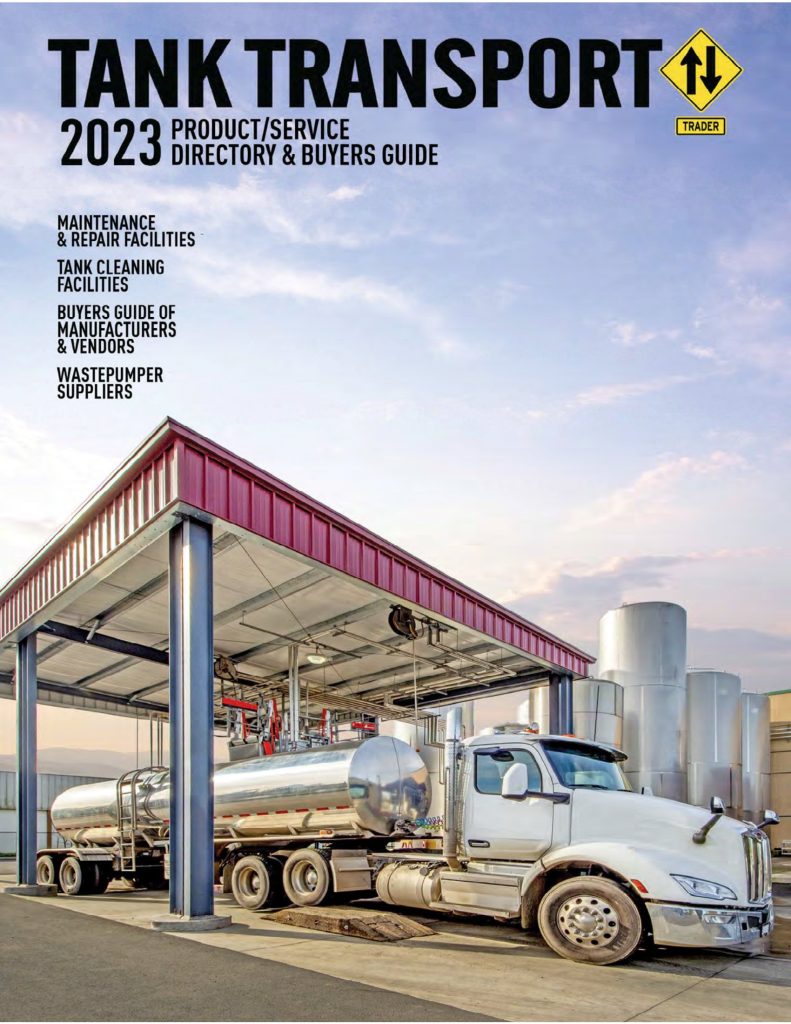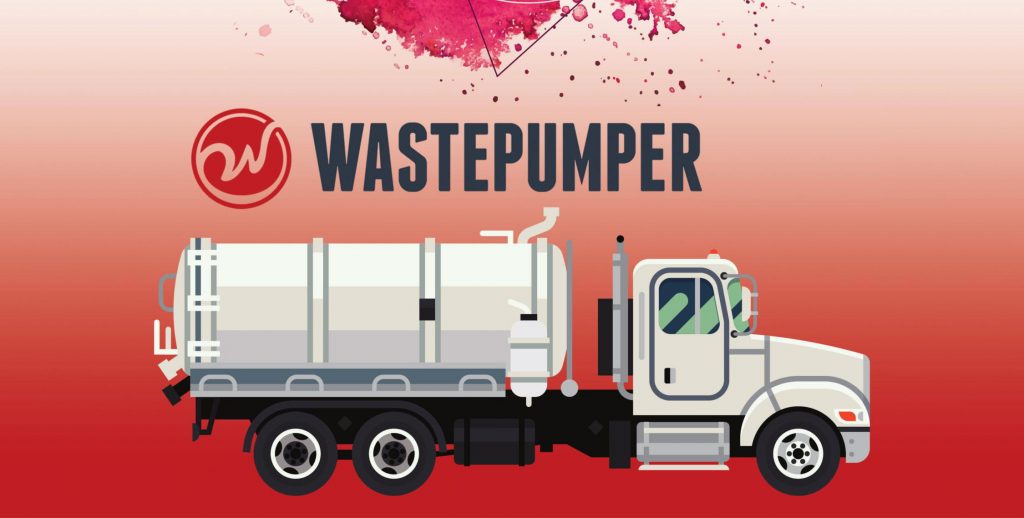- Widespread diversification: As supply chain risks rise, 81% of companies are turning to multiple suppliers, and 69% plan to further increase diversification in the next three years.
- Carrier diversity strategies: Logistics teams are embracing carrier diversity – partnering with multiple transportation carriers across modes and regions – so no single failure can halt deliveries.
- Nearshoring boosts trucking: Manufacturing is moving closer to home. Nearshoring to Mexico, for example, is fueling cross-border trucking growth and making freight networks more resilient.
Trucking Supply Chain Diversification: Boosting Resilience in U.S. Transportation

Diversification is no longer optional—it’s how trucking stays flexible amid disruption.
The U.S. trucking and transportation sector has faced unprecedented logistics challenges in recent years – from global pandemics to fuel costs surging. As the backbone of freight transportation in America, trucking is vulnerable to disruptions that can ripple across the economy. These pressures have spotlighted the need for Supply Chain Diversification in Trucking as companies seek more resilient freight management strategies to keep goods moving. In this context, diversification isn’t just a buzzword in supply chain management – it’s a crucial approach to ensure stability and efficiency.
For more news and updates on Supply Chain, check out this page.
This article explores five essential strategies for diversifying the trucking supply chain, balancing a conversational tone with industry insights. By the end, readers will understand what diversification means in trucking, why it’s vital, and how carriers are implementing it to navigate today’s volatile freight market trends.
What Is Supply Chain Diversification in Trucking?
Supply Chain Diversification in Trucking refers to building a more versatile logistics network for road freight. In practice, it means using multiple options at every link – from sourcing and routes to partners and modes – rather than depending on a single solution. In broader terms, supply chain diversification involves creating a flexible network by working with multiple suppliers, production locations, and transportation modes.
For additional insights into the challenges facing the Trucking Industry, explore this page.
Enjoying our insights?
Subscribe to our newsletter to keep up with the latest industry trends and developments.
Stay InformedApplied to trucking, this could include serving varied industries, utilizing different shipment routes, and integrating other transport modes (rail, air, etc.) alongside truck fleets. The goal is to reduce dependency on any one element so that if one source falters, alternatives keep freight flowing.
For example, a trucking company might service a mix of sectors (retail, manufacturing, agriculture) instead of just one, ensuring that a downturn in one industry won’t halt all business. Likewise, a shipper might maintain contracts with several trucking carriers in different regions. By diversifying in these ways, the trucking supply chain becomes more versatile and better able to adapt when conditions change.

A versatile network of suppliers, routes, and modes is key to ensuring continuous freight flow.
This concept also extends to having backup arrangements and redundant capabilities. A diversified trucking supply chain might involve multiple distribution centers across the country, a blend of contract and spot market freight, and even contingency plans using intermodal transport if needed. Essentially, diversification in trucking means not putting all your freight eggs in one basket. It’s a proactive strategy to build resilience into how goods are moved by road.
To dive deeper into the realm of Logistics and its role in global trade, follow this link.
Why Is Diversification Important for the U.S. Trucking Industry?
Diversification is critical for trucking companies and shippers in the U.S. because it directly addresses risk and reliability in an increasingly unpredictable environment. The U.S. trucking industry is the linchpin of domestic commerce, hauling roughly 72% of all goods consumed in America. When this system encounters a shock – whether a natural disaster, economic swing, or infrastructure breakdown – the consequences are far-reaching. Supply Chain Diversification in Trucking offers a safety net by ensuring that no single failure can completely stop the movement of freight.
Recent events have underscored this need. The COVID-19 pandemic disrupted supply lines worldwide; trucking companies with diversified networks (multiple warehouses, alternate routes, and several trusted carriers) managed to reroute shipments and adapt more smoothly than those tied to one approach. Similarly, extreme weather and geopolitical events have caused regional bottlenecks. A well-diversified operation can pivot around a closed port or a flooded highway by using alternative carriers or modes. Research backs up these benefits: according to a McKinsey report, organizations with resilient, diversified supply chains can recover up to 40% faster from major disruptions compared to less-prepared peers.

Nearshoring growth signals a shift toward cross-border trucking and more resilient supply lines.
In trucking terms, this could mean delivering critical goods on time while competitors are stalled during a crisis. Diversification also helps combat ongoing industry challenges. One pressing issue is the truck driver shortage. In 2021 the driver shortfall hit an estimated 80,000 drivers, and it may soar to 160,000 by 2030 if trends continue.
For additional insights into the rise of Driver Shortage, explore this page.
Relying on a small pool of drivers or a single hiring pipeline is risky – trucking firms are now diversifying their recruitment and retention strategies (as we’ll discuss later) to ensure they have the human resources needed to keep trucks on the road. Another challenge is cost volatility. Fuel is often a carrier’s single largest expense, and diesel price spikes or shortages can wreak havoc on operating costs. Diversifying energy usage (for instance, using electric trucks for short hauls or optimizing routes to save fuel) can insulate companies from wild fuel cost swings.
Even the nation’s transportation infrastructure poses a risk: congestion on major highways not only causes delays but also massive expenses. In fact, traffic congestion on U.S. highways added $108.8 billion in extra costs to the trucking industry in 2022. A diversified approach – such as delivering at off-peak times or using alternate routes and intermodal options – helps bypass some of these bottlenecks.
Stay updated on the latest Infrastructure developments, check out this link.
In short, supply chain diversification is important because it builds resilience and agility. It’s a form of insurance against disruption. A diversified trucking supply chain is better equipped to handle surges in demand (like holiday seasons or sudden market shifts) and downturns (like a freight recession) by reallocating resources where they’re needed. This strategic flexibility ultimately leads to more consistent service for customers and a more stable business for carriers, even as market conditions and logistics challenges evolve.
Diversifying Operations in Freight Transportation

Expanded carrier partnerships create a buffer against capacity shortages and unforeseen closures.
To strengthen resilience, trucking companies and shippers are diversifying operations across the supply chain. This means making strategic choices about modes, routes, partners, and assets. Key operational diversification strategies include:
- Multi-Modal Transportation & Route Resilience – Incorporate rail, air, or sea transport alongside trucking to move freight via multiple channels. Adding at least one transport mode to any part of the supply chain (first mile, long haul, last mile, etc.) makes the network more diversified and can reduce operational risk by buffering against demand swings.
For example, if a regional highway is closed, a shipper with rail agreements can shift some loads to rail lines. Even within trucking, maintaining alternate routes for key lanes (or using secondary highways when interstates jam up) ensures deliveries aren’t tied to a single road. This strategy relies on robust planning and real-time data, but it pays off by keeping freight moving despite infrastructure hiccups or capacity crunches.
To dive deeper into how Intermodal strategies boost capacity, follow this link.
- Carrier and Supplier Diversity – Partner with multiple freight carriers and suppliers instead of a single provider. In practice, a shipper might contract with several trucking companies across different regions, and a large carrier might work with a network of subcontractors or owner-operators. This carrier diversity approach means having a trusted set of transportation partners that keep your business running even if one link breaks.
By creating relationships with a range of carriers (and even across modes), companies aren’t overly reliant on any one trucking firm. If one carrier faces a strike, capacity shortage, or bankruptcy, loads can be shifted to others in the network with minimal disruption. This agility makes operations more flexible and less vulnerable to risk. Many logistics experts consider diversifying carriers one of the best ways to future-proof against unforeseen disruptions.
- Last-Mile Delivery Solutions & Distribution Networks – Expand last-mile delivery options and geographic coverage. The rise of e-commerce has made last-mile efficiency crucial, and diversification here can mean using a mix of delivery methods. For instance, a company might utilize local courier services, crowdsourced delivery apps, or its own fleet of vans for last-mile deliveries, rather than depending solely on one parcel carrier. Additionally, maintaining multiple distribution centers or fulfillment hubs in different regions is a form of diversification.
Redundant warehouses allow shippers to reroute orders through alternate centers if one facility is hit by delays or demand spikes. A more distributed footprint also brings products closer to end customers, which can expedite last-mile delivery and reduce reliance on long-haul trucking for every shipment. In the U.S., many retailers learned this after events like regional storms – those with a single central warehouse struggled, while others with decentralized inventory could keep servicing stores from unaffected locations.
- Fleet Diversification & Optimization – Operate a flexible mix of vehicles and optimize their use. Rather than one homogenous fleet, trucking companies are investing in diverse asset types: long-haul trucks, short-haul trucks, vans, refrigerated units, and even trialing alternative-fuel vehicles. A diversified fleet means the company can handle different kinds of freight and delivery requirements. For example, having some smaller trucks or sprinter vans in the fleet enables a carrier to take on urban deliveries or lighter loads (supporting last-mile needs), while heavy-duty rigs handle interstate freight. Incorporating electric trucks for short trips or alternative fuel vehicles can reduce dependency on diesel and cushion the impact of fuel price volatility.

With multiple distribution centers, if one goes down, another can take over seamlessly.
Effective fleet management backed by data (telematics, GPS tracking, maintenance analytics) is essential here to ensure each vehicle type is used optimally. These fleet optimization tools are part of broader supply chain optimization efforts – they help match the right truck to the right job at the right time, maximizing efficiency. By diversifying fleet capabilities and using advanced scheduling software, carriers can adapt to various shipment sizes, distances, and customer needs without missing a beat.
Leveraging Technology and Workforce Solutions
Diversification isn’t just about physical assets and routes – it also involves leveraging technology and the workforce in smarter ways. In fact, many modern freight management strategies revolve around digital innovation and human resource adaptation. Embracing technology can uncover new opportunities to diversify how freight is managed, while tackling workforce issues (like the driver shortage) ensures the human element of the supply chain remains robust. Below, we examine how cutting-edge tools and proactive people strategies contribute to Supply Chain Diversification in Trucking.
How Can Logistics Technology Optimize Fleet Management?
Advanced logistics technology has become a cornerstone of diversified, agile supply chains. By digitizing operations, trucking companies and shippers gain the visibility and intelligence needed to react quickly to disruptions or to streamline complex multi-channel logistics. One major area is fleet management optimization: modern Transportation Management Systems (TMS) and fleet management software allow companies to plan and reroute shipments in real time. For example, if an unexpected road closure or port delay occurs, these systems can suggest alternative routes or shift loads to different carriers on the fly. This kind of agility is only possible with integrated tech platforms that connect shippers, carriers, drivers, and even customers in one ecosystem.
Real-time data plays a crucial role. IoT sensors and telematics devices now monitor trucks, cargo conditions, and traffic patterns continuously. The data from these devices feeds into dashboards where logistics coordinators can see exactly where each truck is and how it’s performing. Such visibility enables dynamic rerouting – if severe weather is ahead, dispatch can divert a truck to a safer path or transfer the load to a train as a temporary workaround. It also helps in load optimization (ensuring trucks are fully utilized and not running empty).

A flexible fleet, blending long-haul rigs and smaller vehicles, addresses varied freight demands.
These are examples of digital freight management strategies that improve efficiency and resilience. They make the supply chain more diversified by essentially giving you multiple options at any given moment, informed by live information.
Another benefit of logistics tech is predictive analytics. Machine learning models crunch historical freight patterns, freight market trends, and current events to forecast where capacity might be tight or demand might surge. A diversified trucking strategy might use such forecasts to position equipment in different regions in advance or to diversify the customer mix. For instance, if data predicts a big produce harvest in the Southeast, a carrier can reallocate some trucks there while keeping others in the Midwest for retail season – thus not putting all trucks in one market. This is strategic diversification powered by data.
Crucially, technology also aids communication and partnerships. Digital freight platforms can link a shipper with a broad network of carriers (supporting the carrier diversity strategy) almost instantly, expanding the pool of options when primary carriers are unavailable. Likewise, robust Enterprise Resource Planning (ERP) systems connect procurement, inventory, and transport, so if a supplier overseas shuts down, the system can quickly trigger an alternate supplier and adjust the transportation plan accordingly. In essence, tech allows the supply chain to flex and reconfigure rapidly — a hallmark of diversification.
Autonomous and Electric Trucks
Emerging technologies like autonomous trucks and electric trucks are beginning to play a role in supply chain diversification. While still in early stages, they represent innovative ways to reduce traditional constraints and create new logistics options. Autonomous trucks, for example, have the long-term potential to alleviate the truck driver shortage by handling long stretches of highway driving with minimal human input. Several companies are piloting self-driving truck technology on U.S. interstates.
For additional insights into the rise of Autonomous Trucks, explore this page.
In the future, a diversified fleet might include autonomous units that can operate overnight or in tandem with human-driven trucks (platooning), increasing overall capacity without solely depending on finding more drivers. Even before full autonomy is realized, driver-assist technologies (lane-keeping, adaptive cruise control, automated braking) are making trucking operations safer and more reliable. They enable trucks to run with fewer interruptions and can reduce accident-related delays – effectively another boost to reliability.
On the other hand, electric trucks and other alternative-fuel vehicles diversify the energy sources used in trucking. With diesel prices volatile and sustainability becoming a priority, many U.S. fleets are investing in electric delivery vans and even class-8 electric semis for short-haul routes. Companies like UPS, FedEx, and PepsiCo have begun integrating electric trucks to cut fuel costs and emissions. By having a portion of the fleet powered by electricity (or hydrogen, CNG, etc.), carriers are less exposed to fossil fuel supply shocks and price spikes.
For more news and updates on Electric Trucks, check out this page.

Introducing electric trucks helps insulate fleets from fuel cost swings and emissions constraints.
Electric trucks are particularly useful for predictable, shorter routes (like urban deliveries or shuttling goods from ports to nearby warehouses) – including those critical last-mile delivery runs. They also often benefit from lower maintenance needs due to simpler engines, meaning more consistent uptime. Of course, deploying these trucks requires new infrastructure (charging stations) and careful planning to ensure they’re used where they make sense. But as part of a diversified strategy, they offer a promising way to keep goods moving when diesel supplies are tight or regulations demand cleaner transport.
Incorporating autonomous and electric vehicles into operations is still an evolving endeavor, and not every company will adopt them immediately. However, just as diversification in suppliers or routes adds resilience, diversification in vehicle technology can too. A mix of traditional and advanced trucks ensures that as the landscape changes – be it regulatory changes, technological breakthroughs, or labor market shifts – a trucking operation can smoothly transition and continue to deliver.
Stay updated on the latest Automation breakthroughs shaping modern freight operations, check out this link.
How Is the Industry Addressing the Truck Driver Shortage?
The truck driver shortage is a well-documented challenge that threatens supply chain continuity. With freight demand rising and many veteran drivers retiring, the industry must diversify how it attracts and retains drivers to keep the supply chain moving. In other words, solving the driver shortage is itself a form of reinforcing the supply chain’s resilience. So, how are companies tackling this issue in an impartial, fact-based way?

Emerging tech—from AI to autonomous trucks—bolsters adaptability in volatile markets.
Firstly, carriers are broadening their recruitment efforts. Traditionally, the trucking workforce has been predominantly male and older, but firms are now reaching out to non-traditional labor pools. Initiatives to recruit women drivers, younger drivers (through apprenticeship programs and advocacy for lower interstate driving age via programs like the Drive-SAFE Act), and military veterans are gaining traction. By diversifying the workforce, the industry isn’t so dependent on one demographic that’s shrinking. Some large fleets have set targets to significantly increase their percentage of female drivers and have created support networks and training tailored for them.
Companies are also improving driver training and career development. The aim is to make entering the truck driving profession easier and more appealing. Apprenticeship programs pair new drivers with experienced mentors, smoothing the learning curve. Additionally, carriers are investing in training for specialized freight (hazmat, tanker, etc.), which opens opportunities to carry a wider variety of loads. This not only adds capacity to those niche markets but also gives drivers a chance to diversify their skills and value (potentially earning higher pay in specialized roles).
Recruitment and Retention Initiatives

Companies with diverse supply chains recover from major disruptions up to 40% faster.
Beyond hiring, retention is a critical focus – keeping the drivers you have. Carriers have recognized that to reduce turnover, they must address the root causes that drive people away from the field. Key retention initiatives include:
- Increasing driver pay and benefits: Many fleets have raised wages substantially (some reports note driver pay increases at five times the historic average in recent years) and are offering bonuses. Better healthcare benefits, retirement plans, and even profit-sharing or stock options at some companies are being used to make trucking a more sustainable long-term career. Higher compensation directly tackles one reason drivers leave – to seek better-paying work elsewhere.
- Improving working conditions: Life on the road is tough, so companies are striving to make it more driver-friendly. This involves ensuring drivers get more home time (through optimized route planning and relays), providing well-maintained newer trucks (with comfortable cabs and modern amenities), and respecting drivers’ time by minimizing unpaid wait times at docks. Some fleets now offer schedule options that weren’t common before, like four-days-on, three-days-off regional routes, to cater to those who want a work-life balance not traditionally associated with long-haul trucking.
- Investing in driver facilities and support: At company terminals and distribution centers, amenities like rest lounges, gyms, and guaranteed parking spots are being added. Support helplines for drivers, driver health and wellness programs (covering nutrition and mental health on the road), and mentorship programs all contribute to a more positive environment. By taking care of drivers as valued professionals, companies hope to reduce the attrition that leads to chronic shortages.
- Technology and automation to assist drivers: Interestingly, the push toward automation in trucks isn’t meant to replace drivers in the near term, but to support them. Collision avoidance systems and advanced cruise control reduce fatigue and stress. Some fleets use routing software that factors in safe parking availability so drivers know where they can stop, which addresses a common pain point. Even electronic logging devices (ELDs), while sometimes unpopular, if used smartly can automate tedious paperwork. By making the job a bit easier and safer, these technologies can improve job satisfaction and keep drivers in the industry longer.
All these recruitment and retention initiatives are forms of diversification in a human sense – the industry is diversifying who drives trucks and how drivers work. It’s a necessary complement to the other supply chain diversification strategies. After all, multiple modes, routes, or warehouses mean little if there aren’t enough drivers to operate the trucks between them. By creatively attacking the driver shortage, the U.S. trucking industry aims to ensure that the people side of the supply chain is as robust and flexible as the physical side.
The progress is gradual, but there are promising signs (for instance, the ranks of female truck drivers have grown modestly year over year, and turnover rates at large carriers have dipped slightly as conditions improve). Addressing the shortage is an ongoing journey, but it’s one of the most impactful ways to future-proof the trucking supply chain.
Conclusion and Outlook

Solving the driver shortage requires creative recruiting, better work conditions, and new technology.
Supply chain diversification in trucking is not just a theoretical strategy – it’s a practical imperative for any carrier or shipper operating in today’s uncertain environment. By diversifying freight operations, embracing technology, and investing in the workforce, the industry is moving toward a more resilient, agile, and optimized future. Companies that have adopted these essential strategies are better positioned to handle whatever comes next, be it a sudden surge in e-commerce deliveries, a geopolitical shock, or a new market opportunity. In an era of constant change, the ability to pivot quickly is what separates supply chain winners from those left idling on the shoulder.
In summary, Supply Chain Diversification in Trucking involves a comprehensive approach: use multiple modes and routes, develop a broad network of partners, deploy technology for visibility and flexibility, and support a stable driver workforce. The U.S. trucking and transportation sector, with its vast scale and critical role, stands to gain immensely from these efforts. An impartial look at the results so far shows improved risk mitigation and often a competitive edge for early adopters. As the industry continues to evolve, diversification will remain a cornerstone of logistics strategy – a powerful way to navigate complexity and deliver reliably, no matter the challenges on the road ahead.
5 Essential Strategies in Supply Chain Diversification
- Multi-sourcing & regional supply: Procurement teams are qualifying multiple suppliers and shifting production to new regions to hedge against disruptions. Many firms have adopted “China+1” strategies – reducing dependence on a single country (like China) by adding alternate manufacturing hubs. This geographic diversification is spreading supply risk and altering freight flows.
- Nearshoring trend: Companies are moving manufacturing closer to the U.S. market to shorten supply lines. Nearshoring to Mexico is a prime example, leading to a surge in cross-border freight as businesses relocate production south of the border. This shift not only cuts transit time and cost but also enhances regional supply chain stability. – Explore our news on factors influencing growth in Nearshoring across the industry, visit this link.
- Carrier and mode diversification: Shippers are using a portfolio of carriers and multi-modal transportation options to ensure capacity. By leveraging trucking alongside intermodal rail and other modes, firms aren’t reliant on any single transport channel. Blending truckload with intermodal rail, for instance, helps guarantee capacity and cost efficiency even when one mode faces disruption.
- Expanded logistics networks: Businesses are adding regional warehouses and distribution centers to decentralize their logistics. This distribution network diversification creates redundant paths to customers – if one hub is impacted, others can pick up slack. Many are also partnering with third-party logistics (3PL) providers to implement these diversification strategies at scale, boosting flexibility and service levels.
- Resilience and agility focus: Overall, diversification initiatives aim to build a more resilient supply chain that can absorb shocks and adapt quickly. Companies with diversified supply networks recover from disruptions up to 40% faster than those without. By spreading out sources, routes, and partners, the U.S. trucking and transportation sector is achieving greater agility and risk mitigation against everything from natural disasters to market swings.
Discover Authoritative External Resources
Below is a curated list of reputable and technical sources offering further insights into supply chain diversification, U.S. trucking regulations, logistics trends, and related topics:
- FMCSA Hours of Service Regulations: Learn about official rules limiting driving time and setting rest requirements at FMCSA Hours of Service.
- USDOT: Freight and Logistics Supply Chain Assessments: Examine government-led evaluations of current supply chain vulnerabilities, along with proposed strategies for strengthening freight networks at U.S. Department of Transportation.
- ATA Driver Shortage Analysis: Understand the factors contributing to the truck driver shortage and see recommended industry solutions at American Trucking Associations.
- ATRI Operational Costs of Trucking: Explore annual cost analysis, including fuel, wages, and equipment expenses, at American Transportation Research Institute.
- Infrastructure Investment and Jobs Act (IIJA): Discover details on the federal funding aimed at improving roads, bridges, and freight corridors at U.S. DOT Infrastructure Law.
- EIA: Diesel and Gasoline Fuel Updates: Stay informed about national diesel price trends, a key operating cost in trucking, via U.S. Energy Information Administration.
- McKinsey’s Supply Chain Resilience Insights: Find broader research on diversification strategies and the impact of nearshoring, technology, and resilience practices at McKinsey & Company.
These external resources provide official data, regulatory guidance, and in-depth research valuable for professionals in the trucking and logistics arena, helping them stay informed on best practices for supply chain diversification and operational efficiency.
More External Resources:
- Discover how supply chain diversification boosts resilience in modern logistics by reading Ryder System’s “Why Supply Chain Diversification is Key for Today’s Supply Chains”.
- Explore data on highway congestion’s impact on freight efficiency in the Cost of Congestion Study from the American Transportation Research Institute at dcvelocity.com.
- Learn practical methods for diversifying supply chains, highlighted in DHL’s global report, through Material Handling & Logistics.
- Find strategies to shield freight operations from unexpected disruptions by using multiple carriers at Trailer Bridge Logistics.



















